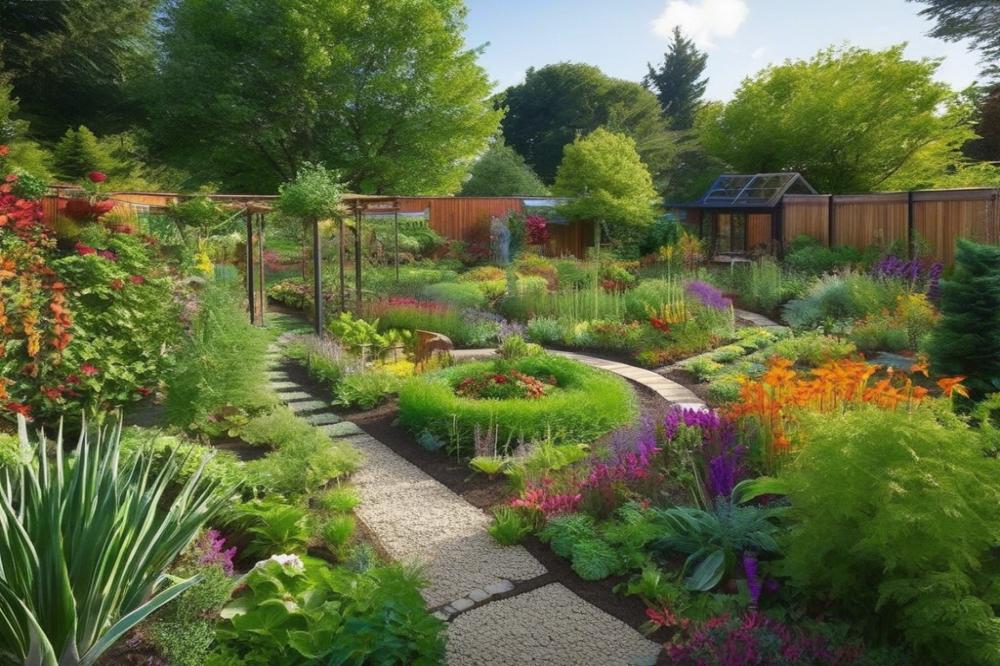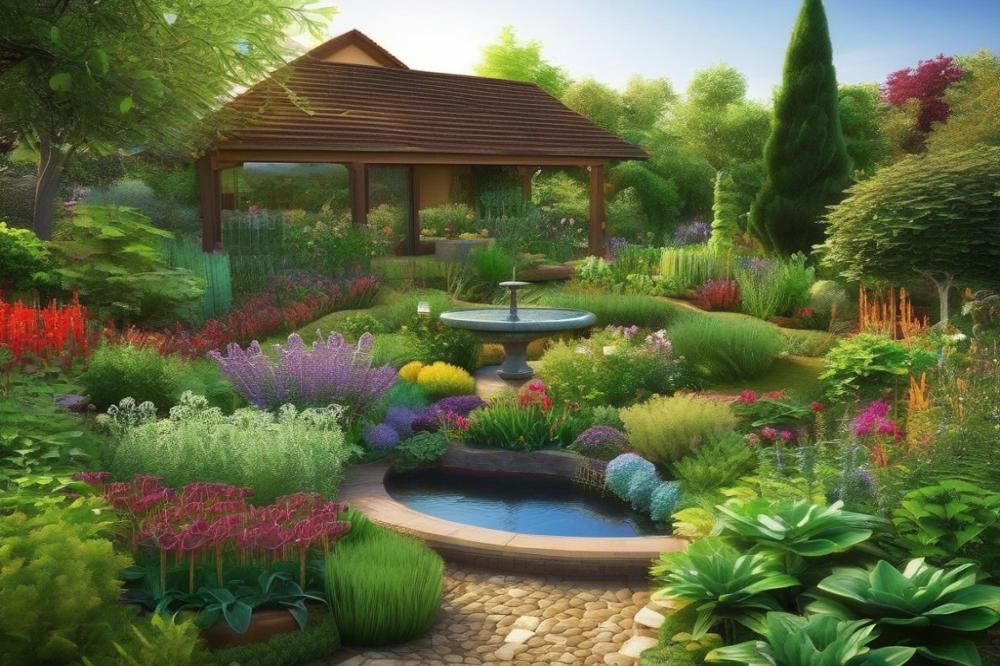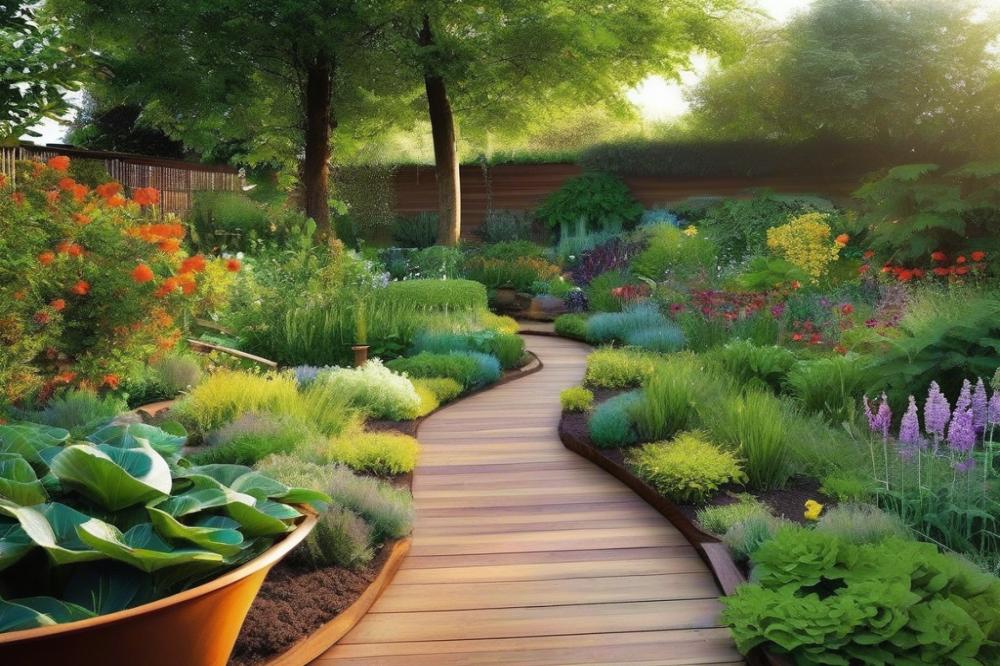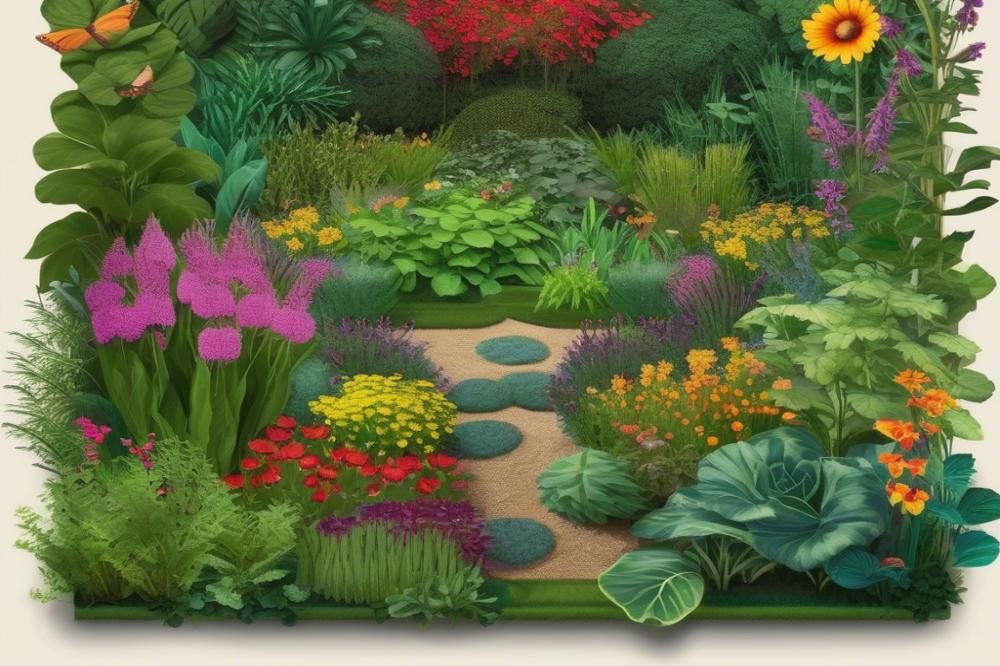Permaculture: A Beginner’s Guide to Sustainable Gardening
Permaculture is more than just a gardening style; it is a holistic approach to land use. It combines ecology, agriculture, and sustainable practices to create a self-sufficient ecosystem. By utilizing this method, gardeners work with nature instead of against it. This creates a balance that helps to sustain both the environment and the gardener.
Significant emphasis is placed on sustainable gardening because our planet’s resources are dwindling. Healthy soil, clean water, and diverse ecosystems are crucial for our survival. If everyone adopted sustainable practices, the positive impact would be immense. People would see improved food quality and better natural habitats. The aim here is to cultivate not just plants, but a way of life that honors the earth.
This article will delve into essential principles that guide permaculture. You will learn practical techniques for setting up your own garden, from understanding local ecosystems to implementing clever planting strategies. Additionally, the concepts covered here will serve as a foundation to inspire you. By the end, you will possess valuable insights and knowledge about #anchor_text_1#. Moreover, you will gain a clearer picture of how to make an impact through your gardening choices. Let’s embark on this journey toward sustainable gardening together.
Ultimately, embracing permaculture can lead to a rewarding relationship with nature. It is about creating connections and nurturing life in all its forms. Get ready to find joy and success in your own sustainable garden!
For more information on how to start your sustainable gardening journey, check out #anchor_text_2#.
Understanding Permaculture


Permaculture offers a fascinating approach to sustainable gardening. It’s built on a few key principles that guide gardeners towards a harmonious relationship with nature. These principles can transform any garden into a thriving ecosystem. Observing and interacting with the environment is essential. This means paying attention to how sunlight, water, and wind interact with your garden.
Principles of Permaculture
Various principles make up the core of permaculture. One crucial principle is the idea of working with nature, rather than against it. Recognizing the existing biodiversity can help create a balanced habitat. Another important concept is using renewable resources wisely. For instance, composting leaves and kitchen scraps can nourish the soil without relying on chemical fertilizers.
Key Concepts: Zones, Sectors, and Patterns
Understanding zones, sectors, and patterns aids in designing your garden layout. Zones refer to the different areas of your garden, which are organized based on how often you need to tend to them. For example, the area closest to your home can be your most productive zone. You can plant herbs and vegetables here because they need frequent care.
Sectors focus on factors that affect your garden. Wind, sun, and even wildlife can be considered sectors. By analyzing these elements, you can place plants wisely. Patterns play a vital role as well. Nature often uses repeating shapes and cycles. Mimicking these patterns can enhance the efficiency of your gardening methods.
The Ethics of Permaculture
Ethics are the backbone of permaculture. Three core ethics guide the practice: care for the earth, care for people, and fair share. Caring for the earth means protecting natural resources and biodiversity. By improving soil quality and conserving water, you contribute positively to the environment. This is the first ethical principle.
Next comes the idea of caring for people. This means creating systems that support community and well-being. A garden can serve as a source of food and connection for families and neighbors. Lastly, fair share promotes the idea of sharing the surplus. Having an abundance in your garden allows you to share it with others. This approach fosters a sense of community and generosity.
Getting Started with Permaculture Gardening


Assessing your space and resources is the first step to creating a thriving permaculture garden. Take a good look at your yard or garden area. What kind of plants already grow well? Consider the sunlight and shade patterns throughout the day. Observe rainfall patterns too, as water availability is key to growing healthy plants. It’s essential to take stock of what you already have. Inventory your tools and materials—this can make a big difference in your planning.
Choosing the Right Location for Your Garden
Picking the ideal spot for your garden is crucial. Search for a location that receives adequate sunlight. Most food plants prefer at least six hours of direct sunlight daily. Nearby trees or buildings can create shadows, so avoid those areas. Water access is also important. If your garden is far from a hose or faucet, you may struggle to keep plants hydrated. Think about the wind, too. Strong winds can damage young plants. A sheltered location can help protect them.
Designing Your Permaculture Garden Layout
Now, let’s talk about designing your garden layout. Start by sketching a simple plan on paper. Consider different zones in your garden. Place elements that will need more care, like vegetable patches, closer to your home. This makes maintenance easier. Think about plant spacing and companion planting. Some plants support each other, while others compete for resources. Maximize your space by using vertical gardening techniques, which can add layers and depth. Don’t forget about pathways; they are essential for accessibility.
Lastly, remember to integrate various elements into your design. Embrace biodiversity. Mixing flowers with vegetables attracts beneficial insects and deters pests. This creates a balanced ecosystem that can thrive over time. Always be mindful of the natural resources available to you and aim to work with them, not against them.
Soil Health and Preparation


Healthy soil is the foundation of permaculture. Without good soil, plants struggle to grow. Nutrient-rich soil supports strong root systems and encourages biodiversity. Healthy soil means healthy plants, which leads to a thriving garden. This connection between soil and plant life is crucial for any sustainable gardening approach.
Importance of Healthy Soil in Permaculture
Soil health influences everything from water retention to nutrient availability. The living organisms within the soil create a complex ecosystem. Earthworms, bacteria, and fungi all contribute to a vibrant soil community. Each plays a role in breaking down organic matter, making nutrients accessible for plants. When soil is alive with these organisms, plants can flourish.
Methods for Building Soil Fertility
Building soil fertility takes time, but it is possible. One effective approach is composting. By turning kitchen scraps and yard waste into compost, you add vital nutrients back into the earth. This process improves soil structure and enhances its ability to absorb water. Green manures, or cover crops, are another excellent way to boost fertility. They add biomass and nutrients, enriching the soil while also protecting it from erosion.
Crop rotation is another practical method. Changing the types of plants grown in a specific area each season helps prevent nutrient depletion. Different plants have varying nutrient needs and can also contribute to soil health in unique ways. Incorporating nitrogen-fixing plants, like legumes, supports fertility as well.
Techniques for Soil Conservation
Soil conservation is vital for maintaining the health of your garden. A simple technique is mulching. Applying a layer of organic material on the soil’s surface helps retain moisture and reduces weed growth. Additionally, it protects the soil from direct sunlight and erosion. Choosing no-till methods also supports conservation. Minimal disturbance to the soil structure allows for a more stable ecosystem.
Contour gardening is another effective approach. By planting along the natural contours of the land, you can reduce runoff and slow down water erosion. This method keeps the soil in place and helps maintain moisture levels, which is particularly helpful in drier conditions.
In permaculture, caring for the soil means caring for the whole ecosystem. Implementing these practices enriches your garden while supporting a sustainable future. Paying close attention to soil health creates a balance that benefits both plants and their environment.
Plant Selection and Companion Planting


Choosing the right plants sets a strong foundation for your garden. Native plants are often the best option. They thrive in your area’s climate and require less water and maintenance. Beneficial plants, like herbs, can bring pollinators to your yard. When you invite bees and butterflies, you help your garden flourish.
Choosing Native and Beneficial Plants
Start by researching local plants that naturally grow in your region. These species usually adapt well to soil and weather conditions. Additionally, consider incorporating herbs such as basil, dill, and marigolds. These not only serve culinary purposes but also protect other plants from pests. Working with the plants native to your area brings a sense of balance to your ecosystem.
Principles of Companion Planting
Companion planting is an artistic way to grow crops together. When plants support each other, they create a thriving environment. For example, tomatoes grow better when paired with basil. This relationship can enhance flavor and repel unwanted insects. Some plants naturally ward off pests that can harm others. Learning how different species interact can lead to improved yields and health.
Creating Biodiversity in Your Garden
Diversity brings numerous benefits. A mixture of plants can reduce the risk of disease. It also helps maintain soil health. Adding flowers, vegetables, and shrubs creates habitats for various creatures. By doing this, you can attract beneficial insects that aid in pollination. This balance creates a self-sustaining ecosystem that operates harmoniously.
Fostering biodiversity is about more than looks; it’s about function. Think of your garden as a tiny community. Each plant plays a role, whether providing food, shelter, or nutrients to others. Embracing diversity can lead to healthier plants and a richer gardening experience.
Selecting the right mix will not only beautify your space but will also promote a sustainable environment. Start small, and as you learn, expand your approach. The more you understand about plant relationships, the more successful your garden can be. Growing together leads to a thriving and vibrant garden.
Water Management and Conservation
Water is essential for all life, including our gardens. In permaculture, understanding the natural water cycles is crucial. Plants rely on rain and soil moisture, and we must respect these systems. Rainfall patterns differ widely. Knowing how water flows through your land helps in making better decisions for your garden.
Several techniques can boost efficient water use. First, mulching helps retain soil moisture by reducing evaporation. This simple practice protects the soil. It also suppresses weeds, making your gardening easier. Drip irrigation is another method worth considering. Unlike traditional watering, it delivers water directly to the roots, minimizing waste.
Implementing Systems Like Swales and Rain Gardens
Swales are a fantastic way to manage water flow. These shallow trenches slow down water runoff and promote infiltration. They capture rainwater, directing it to where it’s needed most. On a sloped area, swales can be particularly effective. Planted with native species, they stabilize soil and provide habitat for wildlife.
Rain gardens are another valuable addition to your garden. These specially designed areas hold water and allow it to soak into the ground. Dedicated perennial plants thrive here, creating a beautiful space. They help reduce flood risks and filter pollutants from runoff. Establishing rain gardens transforms excess water into a resource.
Incorporating these systems not only conserves water but also enhances soil health. Start by observing your landscape. Identify areas where water collects or drains quickly. This awareness will guide your decisions. Sustainable gardening requires thought, but it pays off in the long run.
Pest and Disease Management
Natural Pest Control Methods
Using natural methods to manage pests can be both effective and safe. Rather than reaching for chemical sprays, consider introducing beneficial insects. Ladybugs and lacewings eat aphids, which helps keep your plants healthy. Garlic and neem oil also work wonders as natural repellents. These options are not only gentle on the environment but can also save you money in the long run.
Creating a Balanced Ecosystem
A balanced ecosystem is crucial in combating pests and diseases. Diversity in your garden attracts various species that naturally control harmful insects. Planting flowers alongside vegetables encourages pollinators, like bees, to thrive. Companion planting can also make a difference. For example, marigolds can deter nematodes and other pests from infesting your crops. When you create a habitat for different organisms, your garden becomes resilient and self-sustaining.
Importance of Observation and Monitoring
Observation is vital in maintaining a healthy garden. Regularly check your plants for signs of pests or disease. Catching problems early can significantly reduce damage. Keeping a garden journal can help you track changes or patterns over time. Monitoring weather conditions is equally important. Weather can influence pest populations, making certain times more prone to outbreaks. By staying aware and informed, you can act quickly when issues arise.
Community and Permaculture
Building Community Gardens
Creating community gardens is a rewarding way to bring people together. These spaces offer a chance to grow food collectively. Neighbors can learn from each other while cultivating plants. Shared labor helps build connections. As people work side by side, friendships form. Everyone has a role, from planting seeds to weeding. Such gardens often produce fresh vegetables, which everyone can enjoy. They promote environmental awareness and healthy eating, too.
Networking with Local Permaculture Groups
Getting involved with local permaculture groups is beneficial. These organizations allow individuals to connect with like-minded enthusiasts. Through meetings and events, you can gain insights from experienced members. They often host workshops, where you can learn hands-on techniques. New friends and partners can be found in these settings. Networking can spark ideas and inspire new projects.
Sharing Knowledge and Resources
Exchanging knowledge within your community fosters growth. Everyone has different experiences and skills to share. Conversations about gardening strategies can lead to innovative practices. Print materials, such as pamphlets, can also be helpful. Resources such as tools can be shared, reducing costs for everyone. Knowledge sharing strengthens the entire community and enhances collective learning. Joining online forums can extend these conversations even further. Ultimately, this sharing cultivates a culture of sustainability and resilience.
Wrapping Up Your Journey into Permaculture
Permaculture gardening offers numerous benefits that can transform not only your yard but also your understanding of the environment. Imagine growing your own food, reducing waste, and providing habitats for local wildlife—all while benefiting from healthier soil. These practices create a balanced ecosystem that naturally supports itself.
Starting small is key. Perhaps you might begin with a raised bed or even just a few containers. This approach allows you to experiment without feeling overwhelmed. As you gain confidence and knowledge, you can gradually expand your garden. Trying out new plants and techniques can be both exciting and rewarding.
Lastly, consider the broader impact of sustainable gardening practices. Each small effort contributes to a larger movement towards environmental stewardship. Your actions can inspire others to reconsider their gardening habits. Embracing these methods can lead to greater awareness of how our choices affect the planet. As you embark on this journey, remember that every step counts. Take pride in your contributions to a healthier, more sustainable future. For additional ideas and designs, check out #anchor_text_3#. It’s never too late to start, so gather your tools and get planting! Explore more strategies at #anchor_text_4#.



